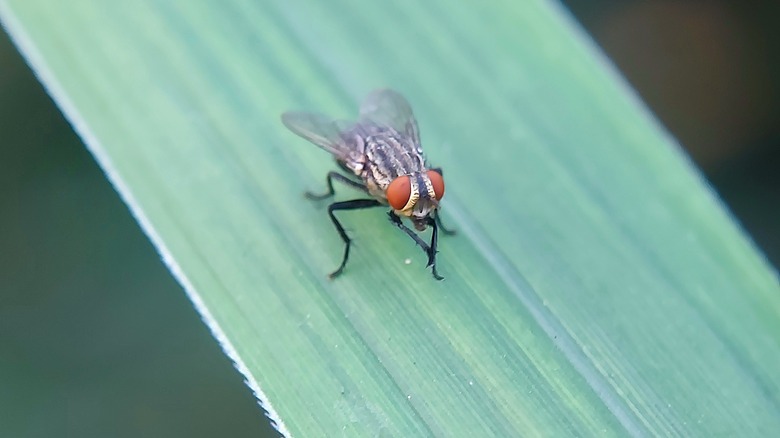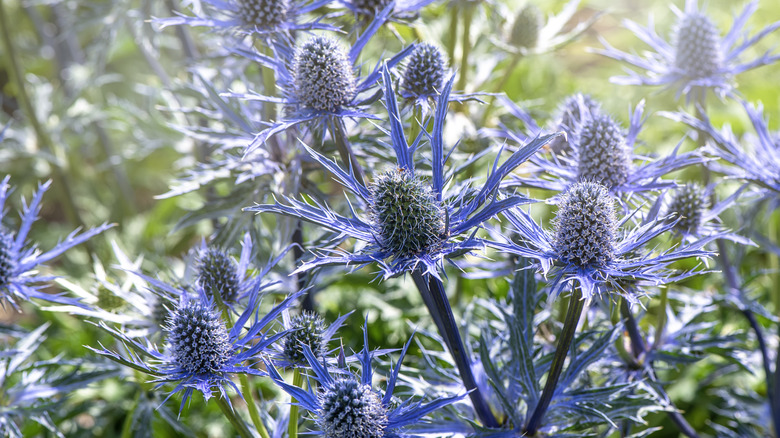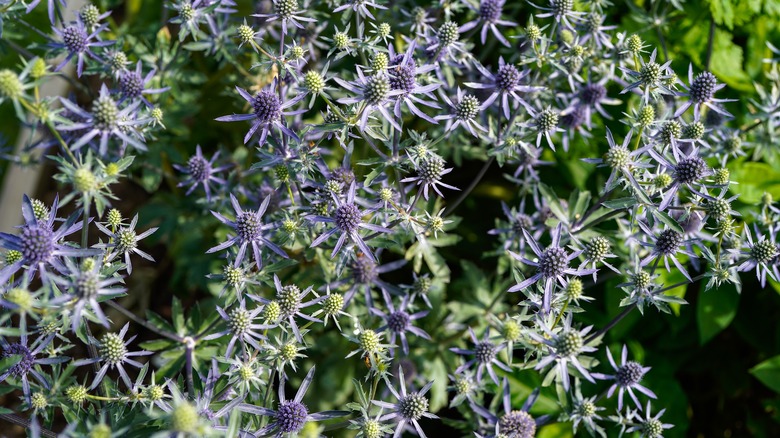This Beautiful Plant Adds A Pop Of Blue In The Garden, But Its Odor Attracts Flies
Sea holly (Eryngium planum) adds a unique touch to any garden thanks to its circular flowers that are surrounded by spiky blue bract. Although they are undoubtedly eye-catching, they do come with a few downsides. Sea holly emits a foul scent that may attract flies to your garden. However, do not let this deter you from planting them altogether. Kim Zimmerman, Master Gardener and Head Designer and Grower for Rowdy Poppy, shared a bit of expert insight that can help you make growing sea holly a pleasant experience. This includes harvesting the plant before its tiny flowers bloom and rinsing them to help tame the odor they emit.
While speaking exclusively to House Digest, Zimmerman also provided a description of the sea holly's odor so that you know what to expect if you do decide to try them out for yourself. Some gardeners believe that the scent is similar to that of dog excrement. "When in full flower, yes, this plant can smell rather pungent, like cat or dog excrement," Zimmerman revealed. Luckily, there are ways to combat this strong plant odor so that you can enjoy all of the benefits of sea holly.
How to reduce the odor emitted by sea holly
The unpleasant scent emitted by sea holly seemingly comes from the small flowers along the plant's bracts after they open up. "As a farmer-florist, I suggest harvesting them before they are open anyway, mostly for the best form and color of the flowers," Zimmerman explained while speaking exclusively to House Digest. There is still hope for those who do harvest the plant after those flowers bloom, too. "If you use them after they're open, a quick rinse can help," the expert shared. "We find the fragrance dissipates pretty quickly after harvesting and conditioning the stems."
Those who do not harvest sea holly before its tiny flowers open up may have to deal with the strong odor attracting flies. However, you likely have no problem with the other generous insects the plant will bring to your garden. "The scent probably does play a part in attracting flies, bees and other pollinators but, that said, these plants produce so many tiny flowers (think, each cluster is made of tens or hundreds of small flowers) that the volume is also quite attractive to busy pollinators," Zimmerman said. If you are in need of a plant that will attract more pollinators to your garden, consider giving sea holly a chance.
The benefits and disadvantages of planting sea holly
Sea holly's ability to attract pollinators is only one of the many benefits Zimmerman shared. The expert revealed that they can also easily add visual appeal to your garden. "The flowers are absolutely stunning on these plants and do make wonderful cut flowers, too," Zimmerman shared while speaking exclusively to House Digest, adding that another perk of sea holly is that it will help your garden look lively during the winter months and provide seeds for birds to feed on.
Zimmerman shared another disadvantages of the plant beyond its foul smell. For example, sea holly isn't very stable once it grows past a certain height. "Depending on how much garden tending you want to do, know that eryngium blooms can sometimes get tall and fall over without proper support," Zimmerman shared. Despite these cons, Zimmerman says sea holly is still a great fit for many gardeners. "Don't let the potential smell discourage you," Zimmerman exclaimed. "It's a gorgeous, drought tolerant plant and so great for our pollinator friends."


